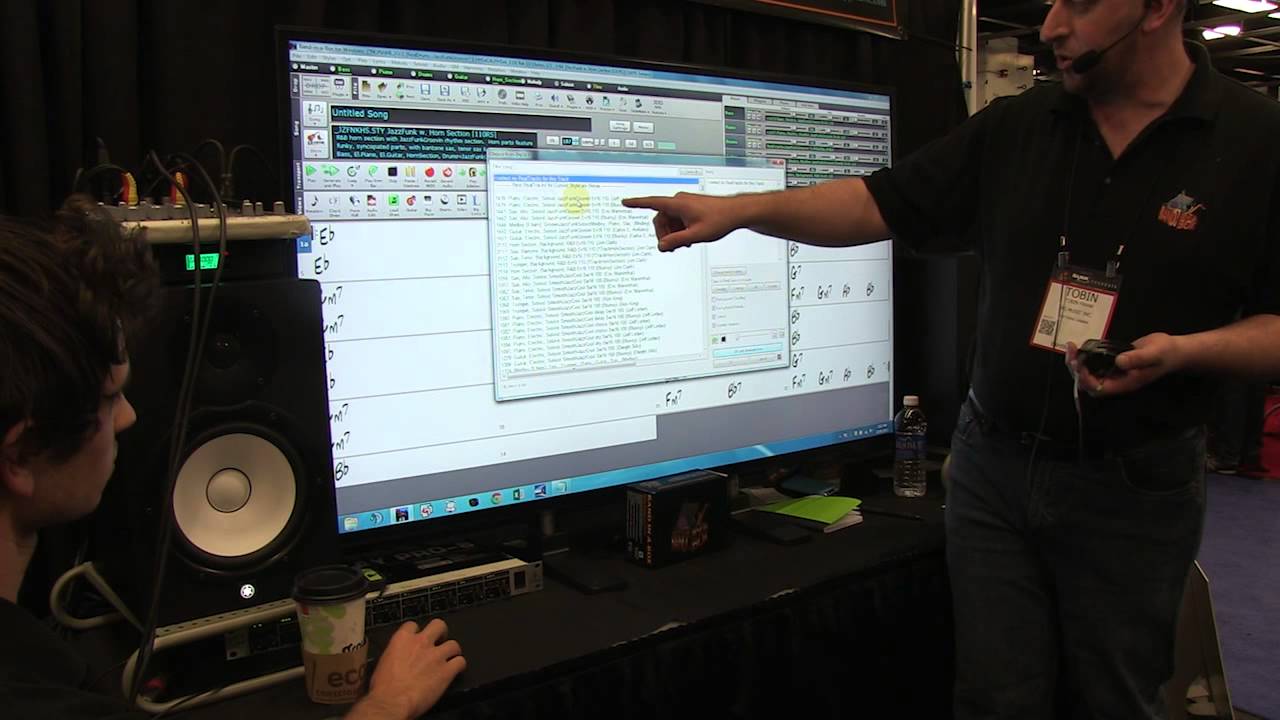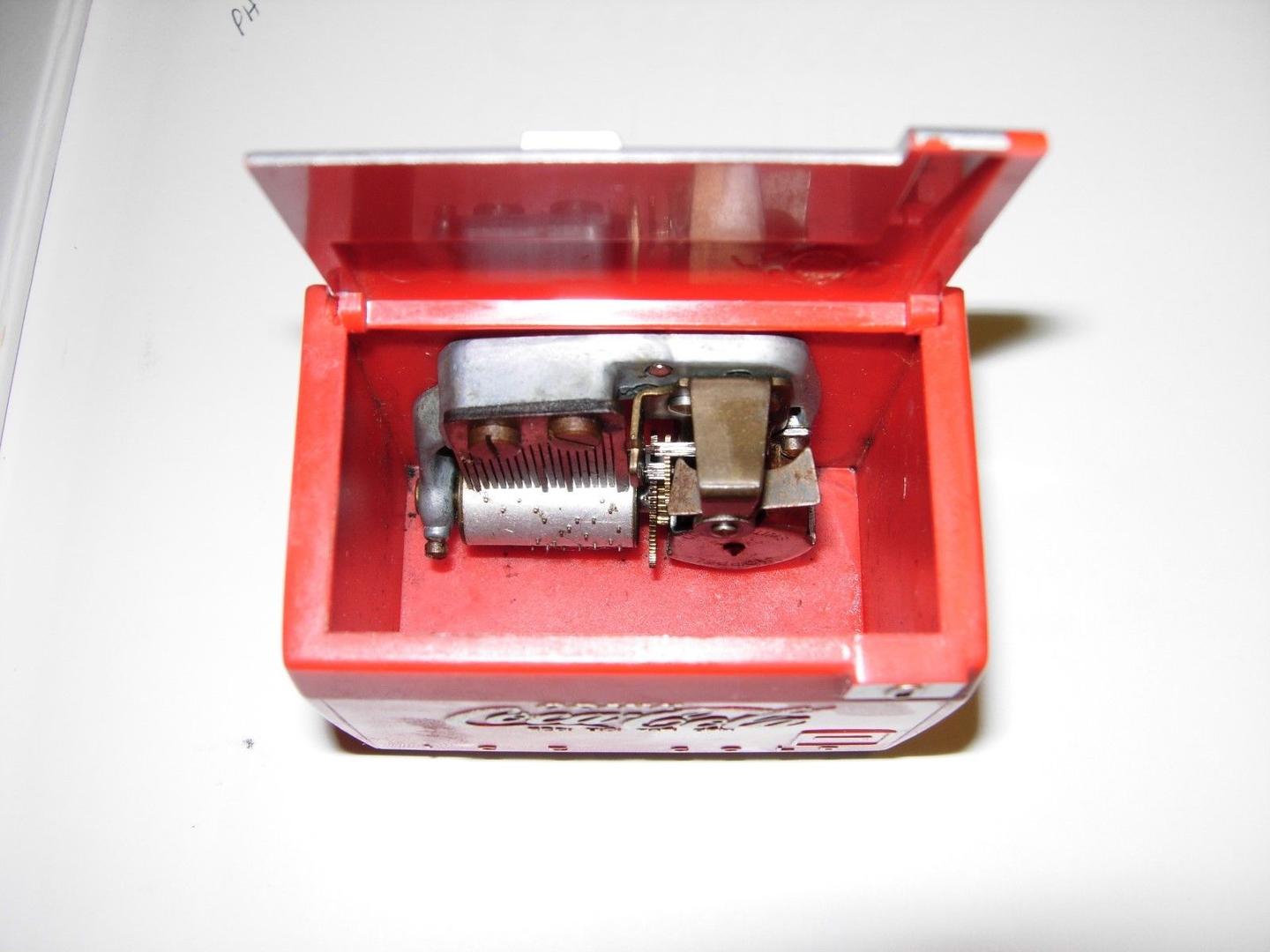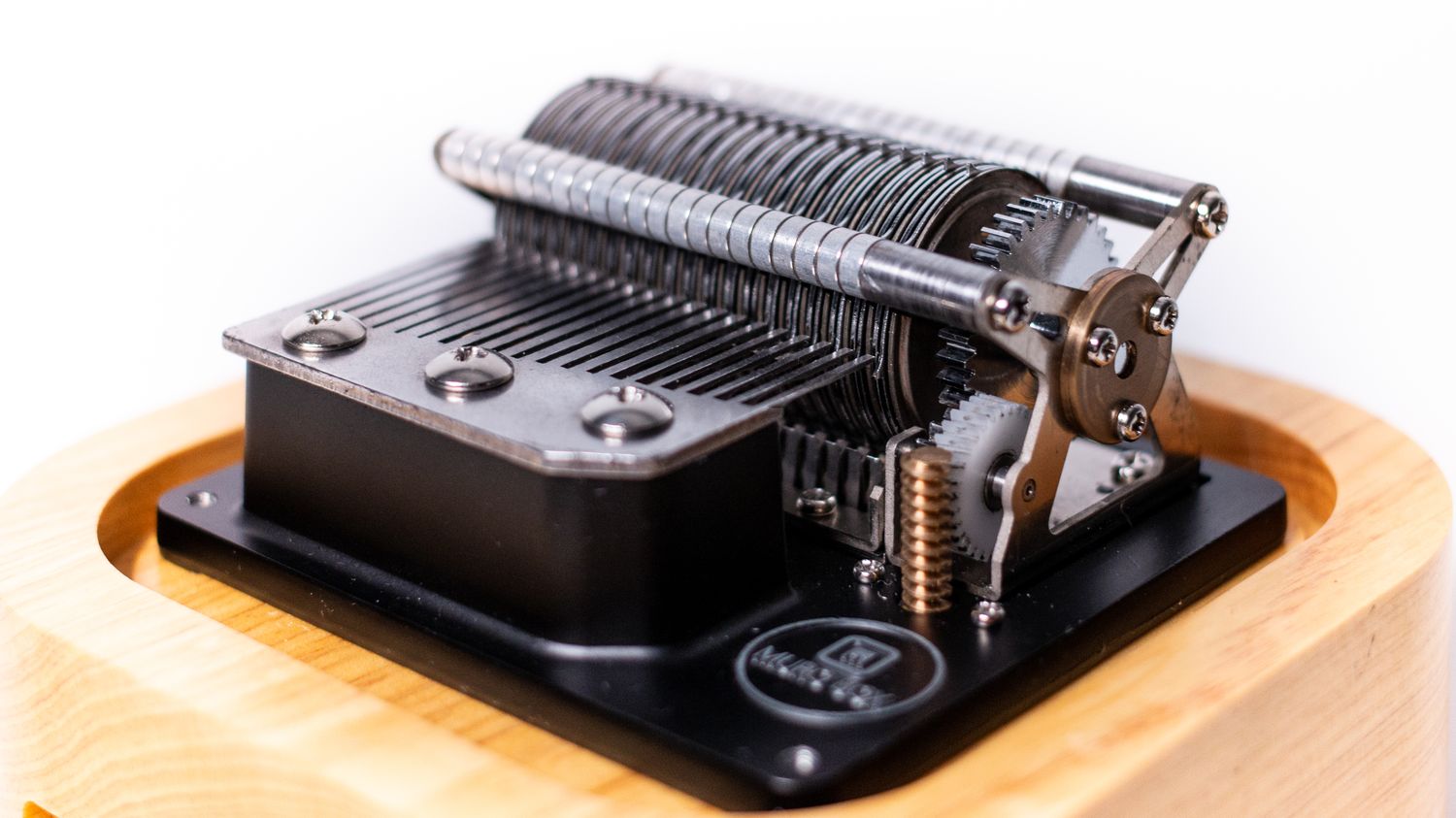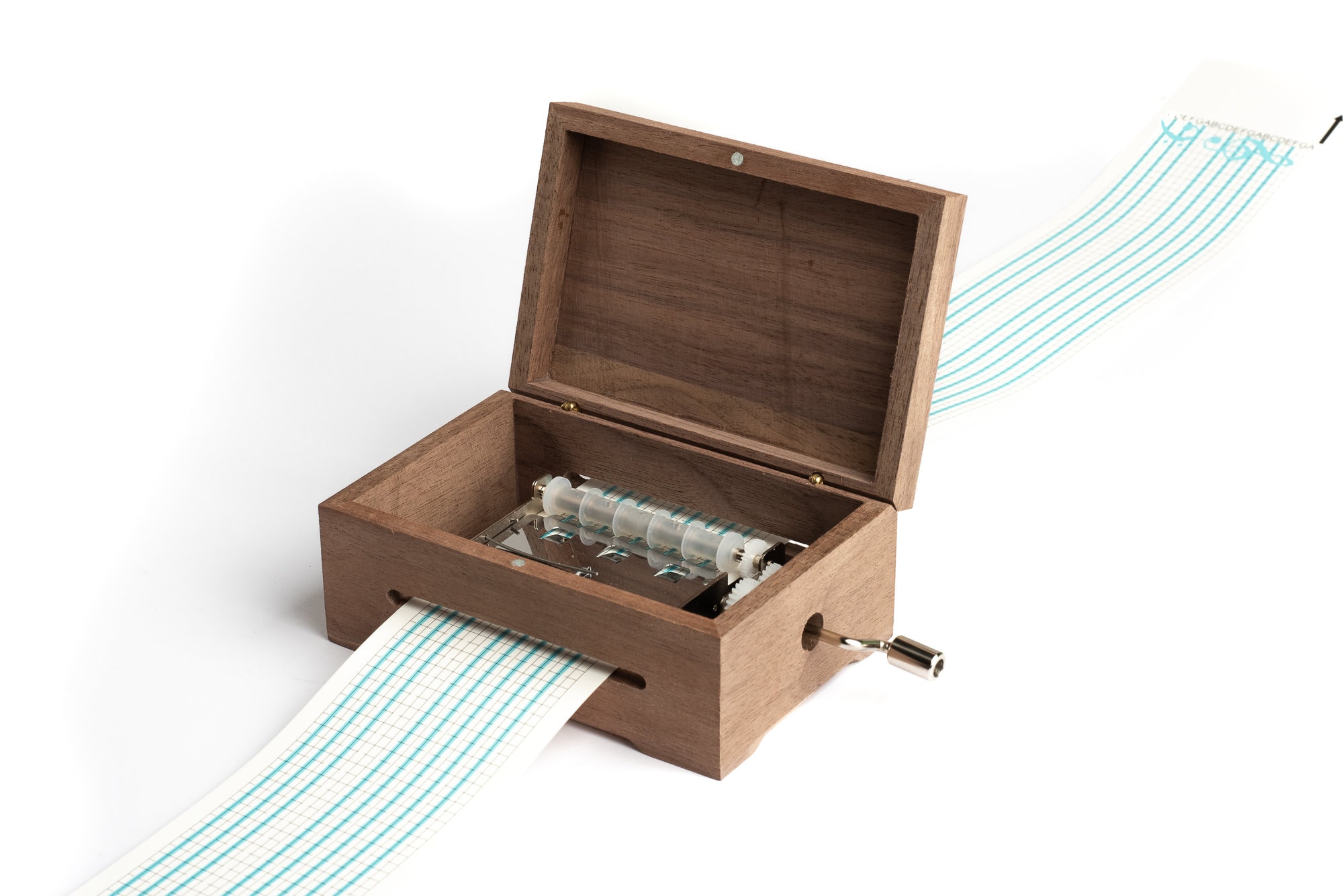Home>Devices & Equipment>Music Box>How To Compose A Music Box Song


Music Box
How To Compose A Music Box Song
Modified: January 22, 2024
Learn how to compose a beautiful music box song with step-by-step instructions and helpful tips. Create enchanting melodies with the mesmerizing sounds of a music box.
(Many of the links in this article redirect to a specific reviewed product. Your purchase of these products through affiliate links helps to generate commission for AudioLover.com, at no extra cost. Learn more)
Table of Contents
Introduction
Welcome to the enchanting world of music boxes! These small, timeless treasures have been captivating hearts for centuries with their delicate melodies and exquisite craftsmanship. Composing a music box song is a creative endeavor that allows you to infuse your own unique melodies into a beautiful and nostalgic instrument.
Music boxes, also known as musical or mechanical boxes, consist of a small box with a metal cylinder or comb mechanism that plucks the tuned teeth or pins, creating a pleasant sound. The simplicity of their mechanism gives them a distinct charm, and their ethereal melodies evoke feelings of nostalgia and wonder.
In this article, we will guide you through the process of composing a music box song from start to finish. Whether you’re a musician or simply someone who appreciates the beauty of music, this step-by-step guide will help you bring your musical ideas to life and create a mesmerizing melody that will enchant your listeners.
So, let’s dive into the world of music boxes and discover the magic behind composing a captivating music box song. Get ready to unlock your creativity and create a piece of music that will transport your listeners to a world of nostalgia and delight.
Step 1: Understanding the Music Box
Before you begin composing a music box song, it’s essential to have a good understanding of how a music box works. This knowledge will help you make informed decisions about the melodies, chords, and harmonies you choose for your composition.
A music box typically consists of a metal cylinder or a rotating disc with tuned teeth or pins. As the cylinder or disc rotates, these teeth or pins pluck a series of metal tines or combs, producing the sound. The length, placement, and arrangement of the teeth or pins determine the melody that the music box will play.
When starting your composition, consider the limitations of the music box’s range. Music boxes typically have a limited number of notes they can play, often around 10-15, which means you’ll need to work within these constraints. Familiarize yourself with the range and notes available to you to make the most out of your composition.
Understanding the timing and tempo of the music box is also crucial. Music boxes usually have a fixed speed at which the cylinder or disc rotates, resulting in a constant tempo for your composition. This fixed tempo adds to the charm and simplicity of the music box sound.
Additionally, keep in mind that music boxes produce a gentle and delicate sound. They are not capable of producing loud or dynamic variations, so it’s essential to choose melodies and harmonies that suit the soft and melodic nature of the instrument.
By having a thorough understanding of the mechanics and capabilities of the music box, you can make informed decisions when composing your music box song. It allows you to work within the confines of the instrument, embrace its unique sound, and create a captivating melody that perfectly complements the enchanting nature of the music box.
Step 2: Selecting the Melody
Once you have a good understanding of how a music box works, it’s time to select a melody for your composition. The melody is the core element of any song, and it plays a significant role in creating a memorable and enchanting music box tune.
When choosing a melody for your music box song, consider the enchanting and nostalgic qualities that are associated with music boxes. Opt for melodies that are simple yet elegant, with a gentle and flowing character. These melodies often evoke feelings of innocence, wonder, and warmth.
You can choose to compose an original melody or adapt an existing tune to fit the music box format. If you decide to create an original melody, remember to keep it within the range of the music box and make use of its available notes. Start by experimenting with different note combinations and progressions until you find a melody that captivates your ears and captures the essence of a music box song.
If you prefer to adapt an existing tune, listen to various songs and melodies to find one that resonates with you. Look for melodies that have a simple and repetitive structure, as these tend to work well with music boxes. Consider the melodic contour and phrasing of the tune, ensuring it complements the delicate and gentle nature of the music box.
Once you have selected a melody, take the time to play it on the music box or a virtual music box simulator if available. This will give you a sense of how it translates to the instrument and allow you to make any necessary adjustments. Remember, the melody should sound captivating and harmonious when played on the music box.
By selecting a melody that embodies the enchanting qualities of a music box, you lay the foundation for a captivating music box song. Whether you choose to compose an original melody or adapt an existing tune, ensure that it captures the essence of the instrument and creates a magical and memorable listening experience.
Step 3: Creating the Chords
Once you have chosen a melody for your music box composition, it’s time to create the chords that will accompany and support the melody. Chords add depth, richness, and harmony to the song, enhancing the overall musical experience.
When creating chords for a music box song, it’s important to keep in mind the limited range of the instrument. Since music boxes have a small number of notes available, you’ll need to choose chords that fit within these constraints. Opt for chords that complement the melody and create a sense of harmony and balance.
A common approach to creating chords for a music box song is to use basic triads. Triads are chords consisting of three notes— the root, the third, and the fifth. These simple chords provide a solid foundation and can be easily adapted to the limited range of the music box.
Start by identifying the key of your melody, which will help you determine the appropriate chords to use. Experiment with different triads that fit within the range of the music box and complement the melody notes. Consider the mood and emotion you want to convey and choose chords that align with that aesthetic.
Keep in mind that music boxes have a gentle and delicate sound, so it’s best to avoid chords that are too dissonant or complex. Stick to simple and sweet-sounding chord progressions that enhance the melody without overpowering it.
Another technique to consider is creating arpeggios with the chords. Arpeggios involve playing the notes of a chord one by one instead of all at once. This technique adds a subtle and melodic quality to the music box song, enhancing its beauty and charm.
Remember to play the chords along with the melody to ensure they harmonize well together. Listen for any clashes or dissonance and make adjustments as needed. The goal is to create a harmonious and mesmerizing blend of melody and chords that perfectly captures the essence of a music box song.
By creating chords that complement and support the melody, you add depth and beauty to your music box composition. With careful consideration of the limited range and delicate sound of the instrument, you can create a captivating harmony that enhances the enchantment of the music box song.
Step 4: Adding Harmonies
Now that you have chosen the melody and created the chords, it’s time to add harmonies to your music box song. Harmonies are additional musical layers that complement the melody and chords, adding richness and complexity to the composition.
When adding harmonies to a music box song, it’s essential to maintain the delicate and ethereal nature of the instrument. Choose harmonies that blend seamlessly with the melody and chords, creating a sense of unity and balance.
One way to add harmonies is by using simple intervals, such as thirds or sixths. These intervals create a pleasant and harmonious sound when played together with the melody. Experiment with different intervals and see how they interact with the melody and chords.
Another approach is to create counterpoint melodies that run parallel to the main melody. Counterpoint involves creating a second melody that intertwines with the primary melody, enhancing its beauty and complexity. Ensure that the counterpoint melody aligns with the chords and maintains a gentle and flowing character.
Consider the range of the music box and the available notes when adding harmonies. Work within the constraints of the instrument, making use of the limited number of available notes to create harmonies that complement and enhance the melody and chords. It’s important to maintain a balanced and harmonious composition that doesn’t overwhelm the delicate sound of the music box.
Listen and play through the music box song with the added harmonies to evaluate how they interact with the melody and chords. Look for a pleasing and cohesive blend of all the musical elements. Make any necessary adjustments to ensure a seamless and enchanting harmony.
By carefully adding harmonies to your music box song, you create a multi-dimensional composition that engages and captivates the listener. The harmonies add depth and richness, elevating the emotional impact of the melody and chords, and further enhancing the enchantment of the music box experience.
Step 5: Writing the Sheet Music
Once you have composed the melody, created the chords, and added harmonies to your music box song, it’s time to write the sheet music. Writing the sheet music allows you to notate your composition, making it easier to share and perform.
When writing the sheet music for a music box song, it’s important to keep it clear and concise. Since music boxes have a limited range, the sheet music should reflect the simplicity and elegance of the instrument.
Start by notating the melody using standard music notation. Use treble clef to indicate the pitch, and utilize appropriate note durations to represent the rhythm and timing. Be mindful of the range of the music box and ensure that the melody falls within that range.
Next, notate the chords above or below the melody. Write them as chord symbols or use standard chord notation, whichever is more comfortable for you. Indicate the root note and the quality of the chord (major, minor, etc.). By notating the chords, you provide a reference for other musicians who may want to play along with your music box composition.
If you’ve added harmonies or counterpoint melodies, notate them using separate staff lines. Show them alongside the main melody or as additional staff lines, depending on your preference. Ensure that the harmonic elements are clearly indicated, allowing performers to understand and interpret them accurately.
Consider adding any specific performance instructions or musical directions to the sheet music. This can include dynamics, accents, or any other expressive markings that enhance the interpretation of your music box song.
Finally, review and proofread your sheet music to ensure accuracy and clarity. Double-check for any errors or inconsistencies and make corrections as needed. The sheet music should accurately represent your composition and be easily readable for performers.
By writing the sheet music for your music box song, you create a valuable reference for yourself and others who wish to perform your composition. It allows you to preserve and share your musical creation, ensuring that it can be appreciated and enjoyed for years to come.
Step 6: Testing and Adjusting the Song
After writing the sheet music for your music box song, it’s crucial to test and adjust the composition. This step allows you to fine-tune and perfect the song before moving forward with the final stages of production or performance.
Begin by playing the music box song using the written sheet music as a guide. Listen closely to the melody, chords, and harmonies to ensure they sound harmonious and balanced. Pay attention to any areas that may need improvement or adjustment.
Take note of any parts of the composition that feel too complex or overwhelming for the music box. Remember, music boxes have a delicate and gentle sound, so it’s important to simplify any sections that may overpower the instrument’s capabilities.
Listen for any parts of the song that may need more emphasis or variation. Consider adding subtle nuances or ornamentation to certain phrases to add interest and enhance the musicality of the composition.
While testing the song, it’s also a good idea to seek feedback from others. Share your composition with friends, fellow musicians, or even online communities to gather different perspectives and insights. Their input can help you identify areas that may need improvement or provide suggestions for enhancing the overall composition.
Based on your observations and feedback, make the necessary adjustments to the song. This can include simplifying complex sections, refining chord progressions, or modifying harmonies. Continuously test and evaluate these adjustments to ensure they enhance the beauty and enchantment of the music box song.
It’s important to remember that songwriting is an iterative process, and it may take several rounds of testing and adjusting to achieve the desired result. Stay open to experimentation and be willing to make changes and refinements to your composition.
By testing and adjusting your music box song, you ensure its quality and cohesiveness. This step allows you to fine-tune the composition to perfectly capture the essence of the music box and create a mesmerizing and enchanting listening experience.
Step 7: Recording the Music Box Song
Once you have thoroughly tested and adjusted your music box song, it’s time to record it. Recording your composition allows you to preserve the enchanting melody and share it with others.
Before you begin recording, consider the equipment and setup needed to capture the delicate sound of the music box. A high-quality microphone can help capture the nuances and subtleties of the instrument, ensuring a faithful representation of the song.
Position the microphone close to the music box, ensuring that it captures the full range of the melody, chords, and harmonies. Experiment with different microphone placements to find the sweet spot that captures the best sound quality.
Ensure that the recording environment is quiet and free from background noise that may interfere with the clarity of the music box. Background noises can detract from the delicate and gentle nature of the instrument, so a quiet space is ideal for capturing the essence of the song.
When recording, consider performing the song multiple times to capture different interpretations and variations. Music boxes rely on the mechanical nature of their mechanism, which can result in slight variations in timing and dynamics. Embrace these variations as they add a unique touch to the recorded version.
If you prefer a more polished sound, you can also consider using digital sound editing software to enhance the recorded music box song. This can involve adjusting the volume levels, removing any unwanted noise, or even adding subtle effects to enhance the overall audio quality.
Once you are satisfied with the recording, save the file in a high-quality audio format. This will ensure that the enchanting melody is preserved and can be shared in its true form.
When sharing your recorded music box song, consider platforms such as music streaming services, social media, or even personal websites to reach a wider audience. Share the beauty and magic of the music box with others who may appreciate this unique art form.
Recording your music box song allows you to celebrate your creative achievement and share it with the world. It ensures that the enchanting melody lives on beyond the physical limitations of the music box, allowing others to experience the joy and nostalgia it brings.
Conclusion
Composing a music box song is a creative and captivating journey that allows you to harness the enchanting qualities of this timeless instrument. By understanding the mechanics and limitations of a music box, selecting a melodious tune, creating harmonies, writing sheet music, testing and adjusting the song, and finally recording it, you can create a truly mesmerizing composition.
Throughout this process, it’s important to embrace the delicate and gentle nature of the music box. The simplicity and elegance of the instrument lend themselves to melodies that evoke nostalgia, wonder, and warmth. By choosing melodies, chords, and harmonies that complement this unique sound, you can create a captivating and enchanting music box song.
Remember to test and adjust your composition, seeking feedback and making refinements as necessary. Embrace the iterative nature of the songwriting process, continuously striving to improve and enhance the musicality of your composition.
Once you have perfected your music box song, recording it allows you to preserve the enchanting melody and share it with others. Whether through digital platforms or personal sharing, sharing your composition ensures that the beauty and magic of the music box can be experienced by a wider audience.
So, unleash your creativity and embark on the enchanting journey of composing a music box song. With each delicate melody, gentle chord, and harmonious addition, you’ll create a piece of music that captures the essence and captivates hearts with the timeless charm of a music box.











